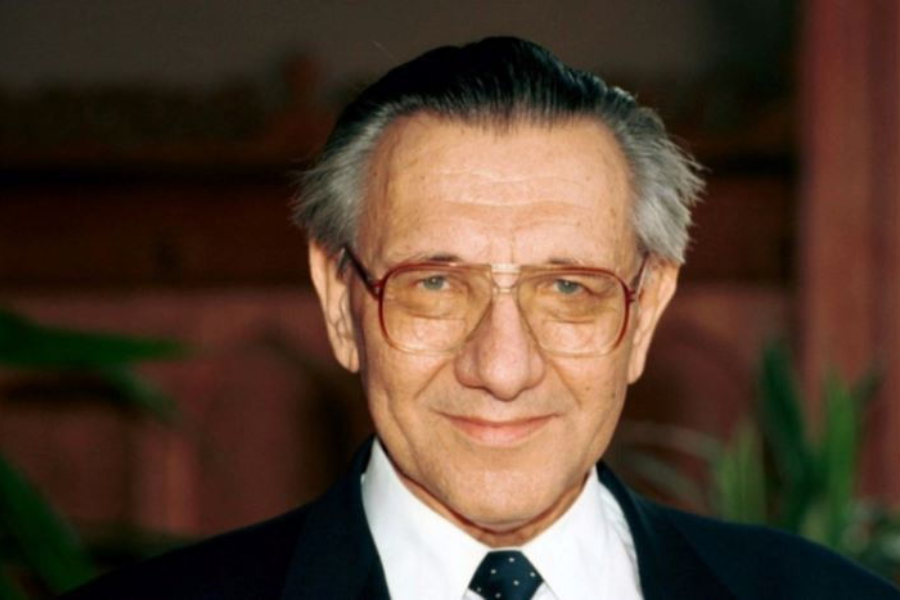
Emericus Zlinszky
Introduction
Emericus Zlinszky is widely recognized as a leader in wetland ecology and environmental science. His groundbreaking contributions to using modern technology to explore and safeguard wetland ecosystems have not only expanded scientific understanding but also shaped policies and management practices at the global level. Zlinszky’s pioneering efforts in utilizing LiDAR (Light Detection and Ranging) technology and remote sensing techniques have revolutionized the way wetlands are studied and monitored. These innovations have provided crucial data that supports the protection of these essential ecosystems. This article examines his life, key achievements, and the significant impact of his work on both science and policy in the field of environmental conservation.
Early Life and Academic Journey
Emericus Zlinszky’s interest in nature began early in life. Growing up in Hungary, he developed a deep connection to the natural world, which eventually led him to focus on environmental science. His academic path began with a degree in biology, where he honed his passion for ecology. Zlinszky pursued higher education at esteemed institutions, equipping himself with both theoretical knowledge and hands-on experience to tackle complex environmental issues.
His academic foundation in biology and environmental science set the stage for his groundbreaking research in wetland ecology. Zlinszky’s particular fascination with wetlands, ecosystems that are often undervalued in broader environmental research, directed his work toward understanding these unique habitats and the challenges they face.
Key Facts about Emericus Zlinszky
| Attribute | Details |
| Name | Emericus Zlinszky |
| Profession | Environmental Scientist, Wetland Ecologist, Researcher |
| Field of Study | Wetland Ecology, Remote Sensing, Environmental Science |
| Key Contributions | Advanced use of LiDAR and remote sensing for wetland research, conservation, and restoration strategies |
| Technologies Utilized | LiDAR, Remote Sensing (Satellite Imagery, Aerial Photography) |
| Focus Areas | Wetland Ecosystems, Biodiversity, Climate Change, Water Regulation, Environmental Policy |
| Policy Influence | Impact on global wetland conservation policies, including the Ramsar Convention |
| Educational Involvement | Professor and mentor, advocate for interdisciplinary research in environmental sciences |
| Global Impact | Contributions to environmental agreements and global wetland restoration efforts |
| Legacy | Innovating wetland monitoring, promoting global understanding of wetland importance, and mentoring future scientists |
| Notable Collaborations | Collaborations with governments, NGOs, and international organizations |
Wetlands and Their Vital Role in Global Ecology
Understanding the critical function of wetlands in global ecology is essential before examining Zlinszky’s contributions. Wetlands are among the most diverse ecosystems on Earth, supporting countless species and providing a range of vital services, such as water purification, flood control, and carbon storage. These ecosystems are crucial not only for biodiversity but also for human communities that rely on them for fresh water, food, and other resources.
However, wetlands face increasing threats due to human activities like urbanization, agriculture, and industrial expansion. The destruction of these ecosystems can have profound effects on wildlife and the communities that depend on their services. This is where the work of experts like Emericus Zlinszky becomes invaluable. His research centers on the dynamics of wetland systems and finding effective methods to protect and restore them.
Revolutionizing Wetland Research: The Role of LiDAR Technology
One of Emericus Zlinszky’s most influential contributions to environmental science is his trailblazing application of LiDAR technology in wetland research. LiDAR uses laser pulses to measure the distance between a sensor and the Earth’s surface, enabling the creation of detailed, three-dimensional maps of landscapes, including wetlands. This technology captures precise data on topography, vegetation, and water levels, offering a comprehensive view of wetland environments.
Zlinszky’s use of LiDAR was revolutionary. Traditional wetland research methods, such as field surveys, were often labor-intensive and prone to error. In contrast, LiDAR provides quick, accurate measurements across vast, difficult-to-access areas. This advancement allowed Zlinszky and his team to gain deeper insights into the structure and health of wetland ecosystems, including the distribution of plant life, the flow of water, and changes in land elevation.
The widespread application of LiDAR in wetland studies has transformed the field. Zlinszky’s work showed that LiDAR could map wetland topography with exceptional accuracy, even in dense forests and other challenging environments where traditional approaches were limited. This breakthrough has significantly improved long-term monitoring efforts and allowed researchers to assess the impacts of climate change and human activity on wetland health.
The Impact of Remote Sensing in Wetland Conservation
In addition to LiDAR, Zlinszky has been a passionate advocate for the use of remote sensing technologies in environmental monitoring. Remote sensing involves collecting data through satellites or aerial photography without direct interaction with the Earth’s surface. This technology is particularly useful for studying large, inaccessible ecosystems like wetlands, where field surveys can be difficult or impossible.
Through his research, Zlinszky demonstrated how satellite imagery and aerial photos could be used to monitor wetlands across vast areas. These remote sensing methods allow scientists to detect changes in wetland environments, such as shifts in vegetation, water levels, and land use patterns, over time.
One of the key advantages of remote sensing is its ability to monitor wetlands on a global scale. Satellite data allows researchers to track wetland health and trends worldwide, providing a broader view of the condition of wetlands across different continents. This global perspective is vital for understanding the consequences of wetland loss and degradation, as well as for designing international strategies to protect these ecosystems.
Contributions to Environmental Policy and Water Resource Management
Zlinszky’s research has gone beyond the laboratory and directly impacted environmental policy and water management practices. His data has provided decision-makers with crucial insights, influencing conservation strategies and policy frameworks at local, national, and global levels. Zlinszky has worked alongside environmental organizations, governmental agencies, and international bodies to advocate for sustainable wetland management.
For example, his findings have helped shape policies aimed at conserving wetland habitats, supporting biodiversity, and mitigating the impacts of climate change. Zlinszky’s expertise in wetland ecosystems and remote sensing has made him a key figure in discussions on water management, especially in regions where wetlands play a vital role in water filtration and flood control.
Zlinszky’s research also contributed to international environmental treaties, such as the Ramsar Convention, which focuses on the protection of globally significant wetlands. His work has helped refine guidelines and strategies under the convention, ensuring that wetlands around the world receive the attention and protection they deserve.
Advancing Wetland Restoration Efforts
Beyond conservation, Zlinszky has also made notable contributions to wetland restoration. Many wetlands have been damaged or lost due to human activities, and restoring these vital ecosystems is a key objective for global conservation efforts. Zlinszky’s research has provided valuable insights into the processes involved in wetland restoration, addressing the challenges and potential benefits of rehabilitating these ecosystems.
A significant aspect of Zlinszky’s work in restoration has been his use of remote sensing technologies to assess the success of restoration projects. By tracking restored wetlands with satellite imagery and LiDAR, scientists can determine whether restoration efforts are achieving their goals. This data-driven approach has been instrumental in improving the effectiveness of restoration programs and ensuring that the resources invested are used efficiently.
Commitment to Education and Mentorship
In addition to his research and contributions to policy, Emericus Zlinszky is deeply committed to education and mentorship. As a professor, he has shaped the careers of many aspiring environmental scientists, emphasizing the importance of interdisciplinary research. Zlinszky encourages students to explore how ecology, technology, and policy intersect, fostering a new generation of environmental leaders.
His mentorship extends beyond the classroom as well. Zlinszky actively collaborates with young researchers, guiding them as they develop their own projects. Many of his former students have gone on to make significant contributions to environmental science, continuing Zlinszky’s legacy of innovation and leadership in the field.
Global Impact and Legacy in Environmental Science
Emericus Zlinszky’s work has had a profound and lasting influence on the field of environmental science, particularly in wetland ecology. His use of cutting-edge technologies like LiDAR and remote sensing has reshaped how scientists study wetlands, offering more accurate and comprehensive data than ever before. Zlinszky’s research has played a key role in shaping global conservation strategies, from protecting wetlands to rehabilitating damaged ecosystems.
As environmental challenges continue to intensify, Zlinszky’s work serves as a powerful example of how scientific innovation and interdisciplinary research can address complex ecological issues. His legacy will continue to shape wetland conservation efforts for years to come, and his impact will be felt by future generations working to protect these vital ecosystems.
Conclusion
Emericus Zlinszky’s contributions to the field of environmental science, particularly in wetland ecology, have been truly transformative. His groundbreaking use of advanced technologies like LiDAR and remote sensing has revolutionized our understanding of wetlands, and his research has been instrumental in developing more effective conservation strategies. Zlinszky’s work has not only expanded scientific knowledge but also influenced global policies and restoration efforts, ensuring that wetlands are preserved for future generations.
Furthermore, Zlinszky’s dedication to education and mentorship ensures that his influence will continue to inspire and shape the next generation of environmental scientists. In a world facing unprecedented environmental challenges, Zlinszky’s work serves as a beacon of hope, demonstrating how science and technology can play a crucial role in the protection and restoration of our planet’s most essential ecosystems.
Frequently Asked Questions
- Who is Emericus Zlinszky?
Emericus Zlinszky is a leading environmental scientist renowned for his pioneering research in wetland ecology. He is known for his innovative use of LiDAR technology and remote sensing to study and protect wetland ecosystems.
- What is the significance of Emericus Zlinszky’s work?
Zlinszky’s research has revolutionized the study of wetlands, providing precise data on their structure, vegetation, and water dynamics. His work has been essential in advancing wetland conservation efforts and informing global environmental policy.
- How has Zlinszky impacted environmental policy?
Zlinszky’s contributions have shaped environmental policies by providing essential data that supports sustainable wetland management practices. His research has influenced international treaties like the Ramsar Convention, focusing on wetland protection and conservation.
- What technologies did Zlinszky use in his research?
Zlinszky is widely recognized for his use of LiDAR technology and remote sensing methods. LiDAR allows for highly accurate mapping of wetlands, while remote sensing tools, like satellite imagery, enable large-scale monitoring of wetland ecosystems.
- How has Zlinszky contributed to wetland restoration?
Zlinszky’s research has been instrumental in assessing the success of wetland restoration projects, using remote sensing technologies to track the progress of restoration efforts and ensure they meet conservation goals.
- What is the future of wetland conservation in light of Zlinszky’s work?
The future of wetland conservation looks bright due to Zlinszky’s contributions. His research has equipped scientists with the tools needed to better understand and protect wetlands, ensuring these ecosystems will be preserved amid growing global challenges.
- How can Zlinszky’s research influence the public’s view of wetlands?
Zlinszky’s work highlights the critical ecological value of wetlands, helping raise public awareness about their importance. His findings inspire greater support for wetland conservation efforts, both locally and globally.
Keep an eye for more latest news & updates on The Washington Vibes!






